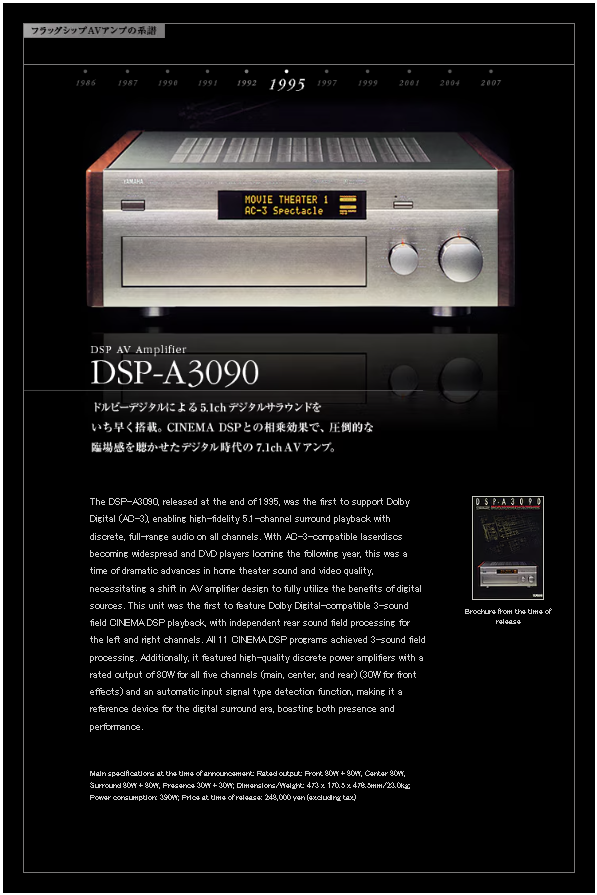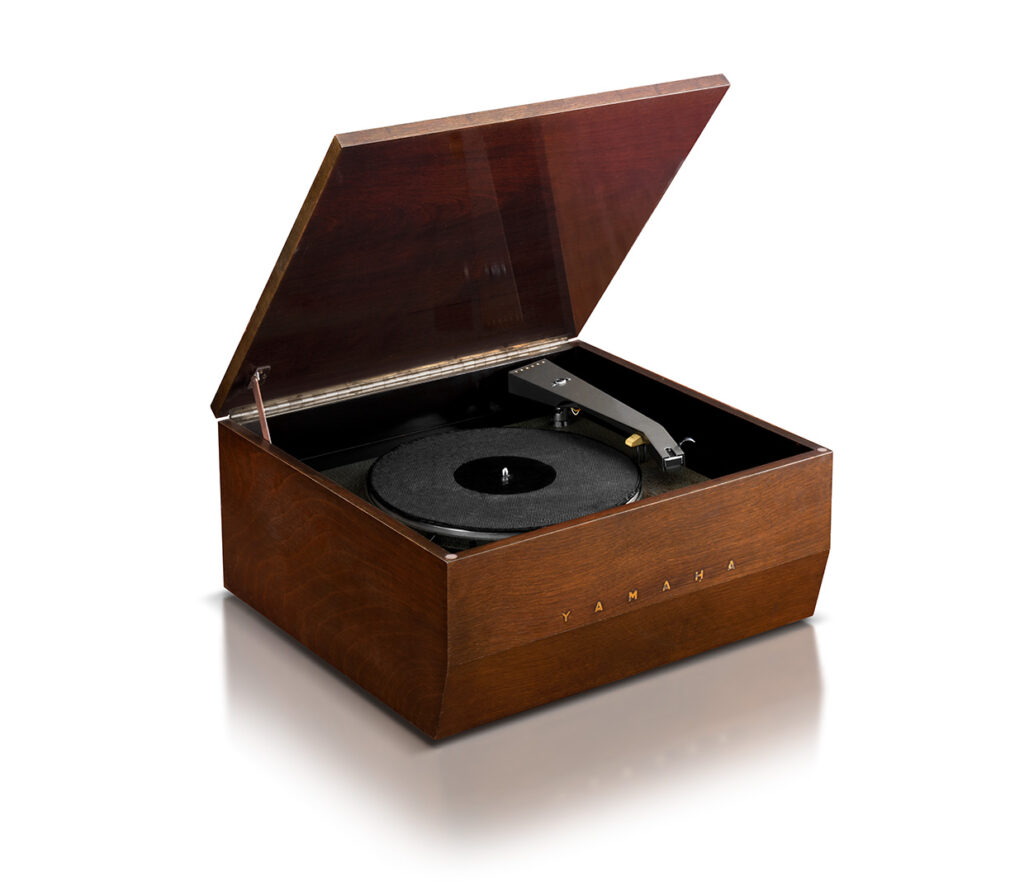Hi-Fi Hall of Fame
2025 Inductee
Yamaha DSP-A3090 Amplifier

Introduction
We like to honour “world’s firsts” — those groundbreaking components that defined entirely new categories of Hi-Fi equipment. Our next inductee was one of those: it was the world’s first amplifier to support Dolby Digital surround sound, the technology that became the gold standard for home theater audio.
That trailblazing component is the Yamaha DSP-A3090 amplifier, which was introduced in 1995.
Let’s take a look at how Yamaha and the DSP-A3090 helped shape the future of surround sound and home theatre systems.
A Brief History of Dolby Surround Sound Technologies
The history of Dolby surround sound is a story of how innovation and a passion for realism reshaped both the movie theater and the living room. Over five decades, Dolby Laboratories transformed audio from a simple two-channel experience into a fully immersive soundscape. Central to that evolution was Dolby Digital (originally known as AC-3)—a breakthrough that redefined how movies and music are heard at home.
Dolby’s journey began with noise reduction, not surround sound. In 1965, Ray Dolby founded Dolby Laboratories in London and introduced Dolby A, a professional studio system that reduced tape hiss. Its consumer counterpart, Dolby B, arrived in 1968, improving cassette fidelity and making high-quality sound portable.
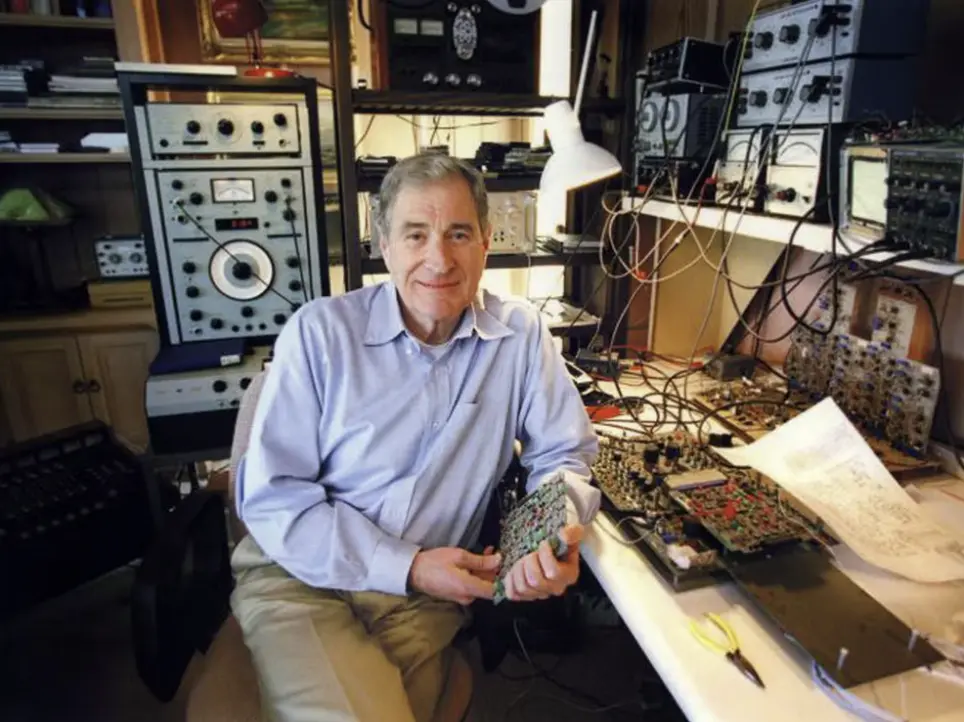
By the mid-1970s, Dolby engineers turned their focus to cinema. Dolby Stereo (1975) used ingenious matrix encoding to fit four channels—Left, Center, Right, and Surround—onto two optical film tracks. It worked with existing projectors yet offered spectacular results. After its debut in “A Star Is Born” (1976) and worldwide success with “Star Wars” (1977), surround sound became a defining part of the movie going experience.
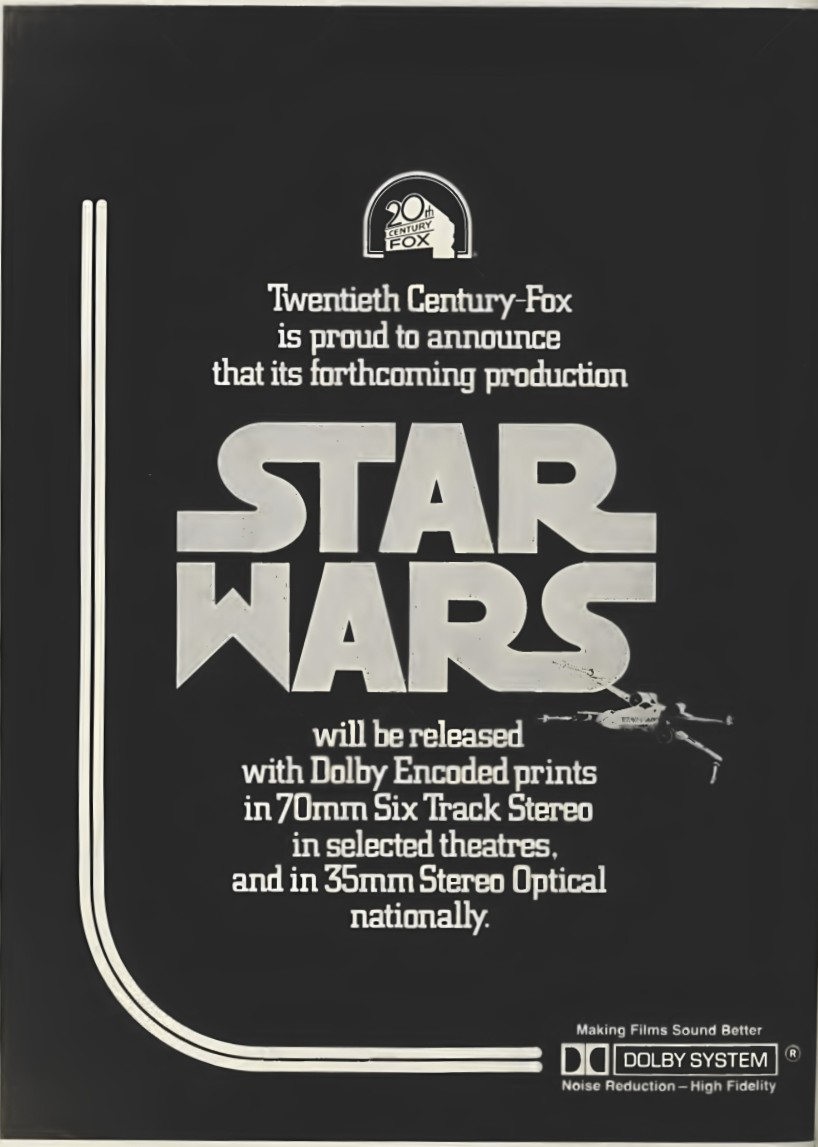
Dolby next set its sights on the home. The Dolby Surround format (1982) adapted the same matrix system for videotape, recreating a front soundstage with rear effects. At first, decoding required an external processor, but by 1987, Sony’s STR-AV1070 became the first receiver with built-in decoding, marking the birth of modern A/V receivers. Dolby Pro Logic followed in 1989, adding a center channel and steering logic for more precise imaging. It dominated the VHS and LaserDisc era, but the sound was still analog and matrix-encoded, meaning channels weren’t fully independent.
The next leap came with Dolby AC-3, later branded Dolby Digital. Developed in the late 1980s, AC-3 was a digital, discrete 5.1-channel format delivering five full-range channels plus one low-frequency effects track. Each channel was encoded separately, eliminating crosstalk and producing unprecedented clarity.
Dolby Digital made its public debut in “Batman Returns” (1992), where the soundtrack was printed as a digital data track on 35mm film. The impact was immediate—explosive dynamics, pinpoint dialogue, and enveloping effects. It was the biggest advance in cinema sound since stereo.
Bringing AC-3 home was the next challenge. The format appeared on LaserDisc in 1995, requiring a player with an AC-3 RF output and a compatible decoder. Yamaha met that need with the DSP-A3090, the first amplifier with built-in Dolby Digital decoding. Soon after, Pioneer’s VSX-D3S added an integrated demodulator, making digital surround sound plug-and-play for consumers.
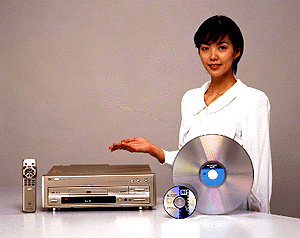
In 1997, Dolby Digital became the mandatory surround format for DVD-Video, cementing its place in home entertainment. It also powered digital TV, satellite receivers, and early game consoles, ensuring a consistent experience across media.
Dolby Digital’s efficiency—compressing six discrete channels into a compact bitstream—made modern surround practical. It laid the foundation for future systems like Dolby Digital EX, Dolby Digital Plus, Dolby TrueHD, and Dolby Atmos, which adds height and object-based sound for a 3D experience.
From the analog beginnings of Dolby Stereo to the digital precision of Dolby Digital, the company’s innovations brought audiences ever closer to the filmmaker’s intent. By making cinema-grade sound accessible at home, Dolby didn’t just improve audio—it helped to create the modern home theatre system.
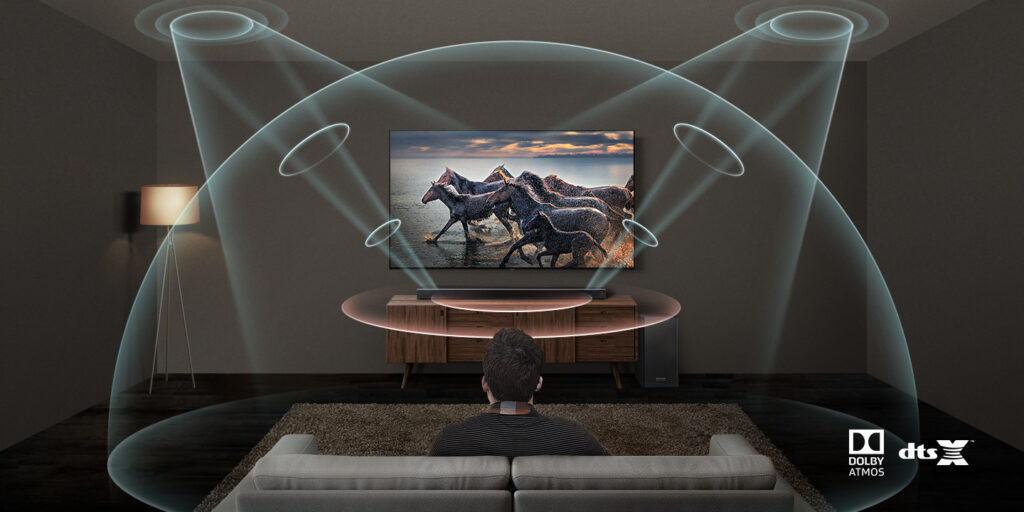
Yamaha DSP-A3090 Amplifier
By 1995, Yamaha had been making home theatre amplifiers and receivers for many years, and the company had a lot of expertise in surround sound. When Dolby Labs made their AC-3 (Dolby Digital) technology available to manufacturers, Yamaha decided to equip the DSP-A3090 with three types of surround sound technologies:
- Dolby Pro Logic,
- Dolby Digital, and
- their own proprietary “Digital Sound Field Processing” (DSP) – more on that below
Dolby Pro Logic was the older, analog surround format used to extract a center and mono surround channel from a stereo source.
Dolby Digital was the latest, digital format. It included five separate discrete, full-bandwidth channels plus a sixth subwoofer channel. The surround effect of AC-3 results in an expanded sense of depth, localization and overall realism compared to Dolby Pro Logic. Yamaha also knew that there would be a lot of Dolby Digital content (laserdiscs and DVDs) available soon.
Yamaha built the DSP-A3090 to support six different AC-3 modes to let the user choose the effect they preferred:
- AC-3 Normal
- AC-3 Spectacle
- AC-3 Musical
- AC-3 Adventure
- AC-3 General
- AC-3 Enhanced

Yamaha Digital Sound Field Processing (DSP)
For content that didn’t use Dolby encoding, Yamaha’s proprietary DSP was able to synthesize the sound characteristics of settings such as concert halls, stadiums, churches, and many other venues. There were settings for eleven “Cinema” modes and twelve “Hi-Fi” modes.
Cinema Modes
- 70mm Spectacle
- 70mm Musical
- 70mm Adventure
- 70mm General
- Pro Logic Enhanced
- Mono Movie
- Variety/Sports
- Classical/Opera
- Recital
- Pop/Rock
- Pavilion
Hi-Fi Modes
- The Roxy Theater
- Village Gate
- Warehouse Loft
- Cellar Club
- Freiburg Cathedral and 1 additional church
- Live concert
- 5 concert halls in Europe and the USA
Home Theatre Connectivity
To make the DSP-A3090 into the heart of a great home theatre system, Yamaha equipped the amplifier with sophisticated audio and video switching capabilities, allowing the user to connect video equipment such as VHS recorders, LaserDisc players, and satellite TV receivers to the system.
The DSP-A3090 was equipped with both digital and analog inputs and outputs, so that it could be used with a wide range of equipment. It had a total of 30 inputs and 18 outputs on the rear panel. The input connections were very up to date for 1995, and included analog, composite video, S-video, AC-3/RF, coaxial, and optical connections.

The AC-3/RF (radio frequency) input was especially interesting. When Dolby Digital was used with laserdiscs, the laserdisc player used separate outputs for the video and audio. The Dolby Digital audio stream was embedded in a radio frequency stream that had to be demodulated before it could be amplified. The DSP-A3090 was not equipped with a demodulator, so users had to buy an outboard device such as the Yamaha APD-1 if they wanted to use LaserDisc.

Here are a few excerpts from the DSP-A3090 user manual to illustrate the wide range of connectivity options supported. This was long before the introduction of the modern HDMI connection, so the audio and video connections generally employed separate cables for audio and video.

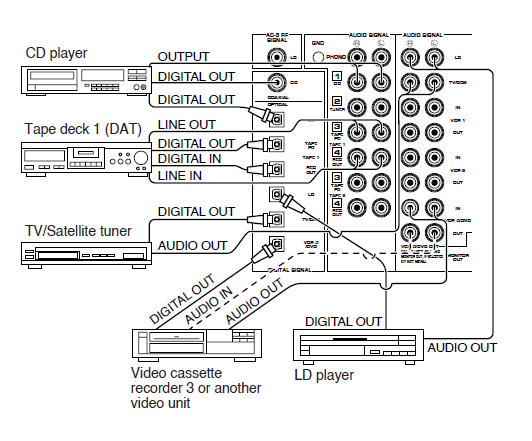

Superb Performance and Build Quality
In addition to it’s outstanding surround sound technology and connectivity, the DSP-A3090 was a superb five channel amplifier.
It delivered a solid 80 watts per channel (20 Hz -20 kHz 0.015% total harmonic distortion into 8 ohms) to the left, right, and center channels, and 25 watts to the “rear effect” (surround) channels. It was also superbly built, with a classic aesthetic and versatile remote control.

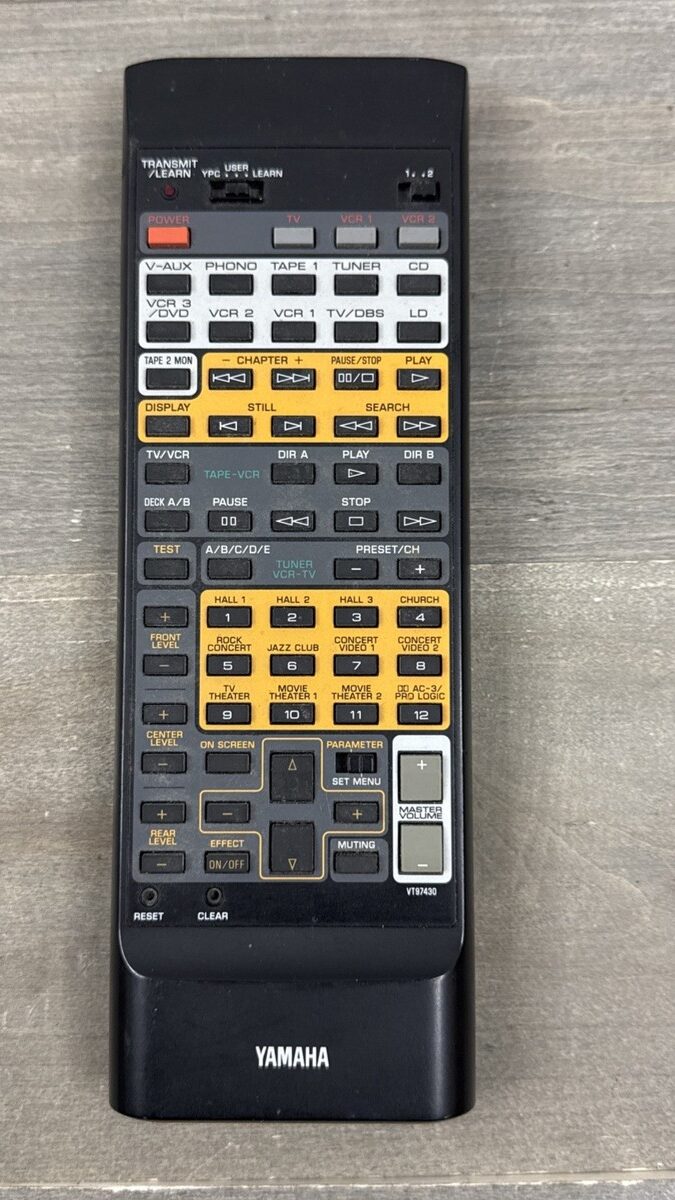
Yamaha Then and Now
Yamaha has been making Hi-Fi equipment since 1954, when they introduced their first record player. More than seventy years later, the company to make great Hi-Fi components.
If you’d like to read the history of Yamaha’s Hi-Fi products, please click here.
Yamaha is an industry leader in Digital Sound Processing and surround sound. In fact, they released a standalone component, the DSP-1 Digital Sound Field Processor, way back in 1986. It was a significant product as one of the world’s first digital sound processors, and it was instrumental in pioneering multi-channel home audio and home cinema. If you’d like to learn more about Yamaha’s DSP (Digital Sound Field Processor) technology, the company has a website dedicated to this topic, just click here.

Thirty years after the introduction of the DSP-A3090, Yamaha continues to produce some fantastic AV amplifiers and receivers. The current flagship of the lineup is the AVENTAGE RX-A8A, which is an 11.2-channel receiver delivering premium 8K/4K home cinema with Dolby Atmos, DTS:X, and “Surround:AI” sound.

More than 70 years after producing their first Hi-Fi component, Yamaha continues to produce great equipment. If you’d like to see the current Yamaha Hi-Fi product line, please visit their website by clicking here.

Yamaha DSP-A3090: Induction into the Hi-Fi Hall of Fame
The Yamaha DSP-A3090 was a groundbreaking amplifier when it was released in 1995. It was the first amplifier to incorporate Dolby Digital surround sound technology, which is the same technology used in today’s modern systems. Of course, Dolby surround sound has evolved over the years, and Dolby “Atmos” is the current standard.
Within a few years, every major manufacturer was building surround sound amplifiers and receivers, very much following the design established by the Yamaha.
The DSP-A3090 was “Hall of Fame” worthy in other respects, too: it was aesthetically beautiful, solidly built, and had enough inputs and outputs to handle just about any combination of equipment that a Hi-Fi enthusiast was likely to own in the late 1990s.
For being the world’s first Dolby Digital component and a great amplifier, the Yamaha DSP-A3090 is inducted into the Hi-Fi Hall of Fame.
